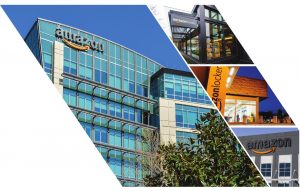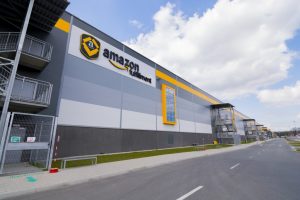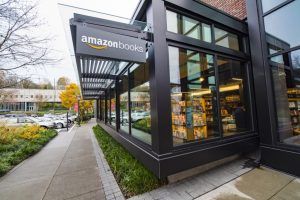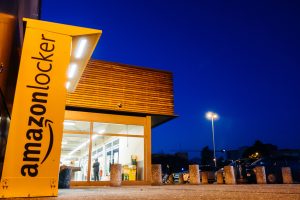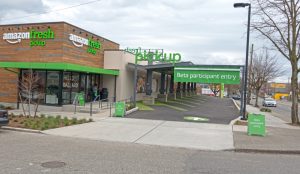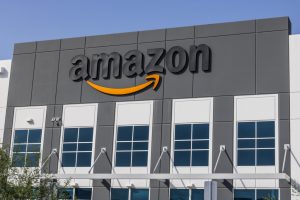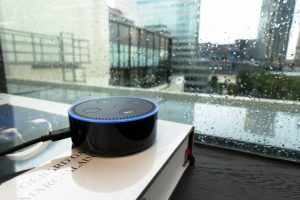It’s a sign of the times that VMSD has bestowed its annual VMSD/Peter Glen Retailer of the Year Award for 2017 on Seattle-based Amazon Inc.
Named in memory of retail industry observer, motivational speaker, author and longtime VMSD magazine columnist Peter Glen, the award recognizes the retailer that best exemplifies his three core retail values: innovation, service and intelligence.
The online giant that changed all the rules of retailing, regarded by some as “the enemy” for the past nearly 25 years for driving consumers away from stores, can no longer be marginalized.
After tiptoeing around the bricks-and-mortar world for years, teasing with a bookstore here and a pop-up there – here a rumor, there a whisper – Amazon jumped into the water with both feet this past June with its acquisition of Whole Foods Market (Austin, Texas) for nearly $14 billion.
Securing 450 high-concept stores in prime demographic locations has given Amazon even more options than it already has.
“We think there are a lot of ways that customers may want to shop, browse and discover, and are excited to give customers new experiences with Amazon through physical retail stores,” an Amazon spokesperson told VMSD.
Advertisement
Since setting up shop on July 5, 1994, selling books on the brand new World Wide Web to a generation of Internet-enabled PC owners, Amazon has traded on innovation. Drones have yet to crisscross the sky making home deliveries, but dependable next-day deliveries by more traditional means have become the standard for online orders, and other e-tailers have struggled to keep pace.
And some 80 million Amazon Prime members, roughly 55 percent of all households in the U.S., paying $100 a year for the privilege, have given the company a sizable base for whom to develop all of its other innovations, like one-click ordering, the Kindle, Fire, Echo, Echo Dot, Alexa and even cloud computing platforms, which it offers to other companies, including retailers.
Shutterstock
However, Amazon has not yet achieved one of its long-term goals: to sell groceries as regularly as it does books, TVs, furniture, apparel, household goods, computers and countless other consumer product categories. Many assume that’s what the Whole Foods acquisition was all about.
“Amazon is on its way to becoming the first trillion-dollar company in history,” says Lee Peterson, evp, brand, strategy and design, for WD Partners (Dublin, Ohio). “To do that, it has to dominate the grocery business.”
Bill Bishop, co-founder and chief architect of the website BrickMeetsClick.com, and a long-time food retail analyst, agrees, “The ultimate goal of the Whole Foods acquisition, I believe, is for Amazon to encourage more customers to do some of their grocery shopping online. That will help speed up the point where Amazon can become the main conduit of not only groceries to the home, but also other things that could ride along on that system.”
Advertisement
But why are groceries so important? “Because of the frequency of purchase,” Bishop explains. “It’s what people do routinely, at least once a week – and, more often, multiple times. Amazon eventually wants to be the site where people place their entire grocery order. And by being on the Amazon site regularly for groceries, they’ll make more of their other purchases [there], as well.”
Shutterstock
For Amazon, the acquisition also made sense from a supply chain standpoint, says Brian Shafley, ceo of design firm Chute Gerdeman (Columbus, Ohio). “Getting 400-plus physical locations gives Amazon micro-warehouses in every meaningful market in the country. It gives Amazon a half-dozen different directions in which to go.”
That might include using existing stores as laboratories for such innovations as Amazon Go. Currently, Amazon Go – a “frictionless” shopping experiment in which Amazon Prime members simply scan their smartphone upon entry, select merchandise and leave the store – remains in beta testing in Seattle for employees only. Seamless transaction technology charges the purchases to the shopper’s account automatically.
“At Amazon, we’re constantly learning and working to find new ways to delight customers. You’ll often hear us say that it’s still ‘day one,’ and that applies to both our traditional online business, as well as other businesses like Amazon Go and Amazon Books,” says an Amazon spokesperson.
And Echo, a voice-controlled speaker that can be used to place orders and control smart-home devices, is already in the marketplace – including, now, in all Whole Foods stores.
Advertisement
“Amazon has already sold 5 million Echo devices,” says Peterson. “Bloomberg estimates that there will soon be 25 million households with [an Echo] on their kitchen tables … Can you imagine what could happen when Amazon aligns with specific brands to promote those Echo purchases?”
Being all things to all people was the strategy Walmart Stores Inc. (Bentonville, Ark.) perfected on its way to becoming the world’s largest retailer, at a time when retailing was mostly confined to physical spaces. That included becoming the largest food retailer, as well, with almost $300 billion in grocery sales. It’s a model Amazon founder Jeff Bezos likely has in mind, according to Peterson.
“Somewhere in Bezos’ office is a bull’s-eye on the wall,” Peterson surmises. “And right in the middle of that bull’s-eye is Walmart.”
With additional reporting by Jennifer Acevedo.
To read VMSD Editor-in-Chief Jennifer Acevedo's thoughts on this year's Retailer of the Year, click here.
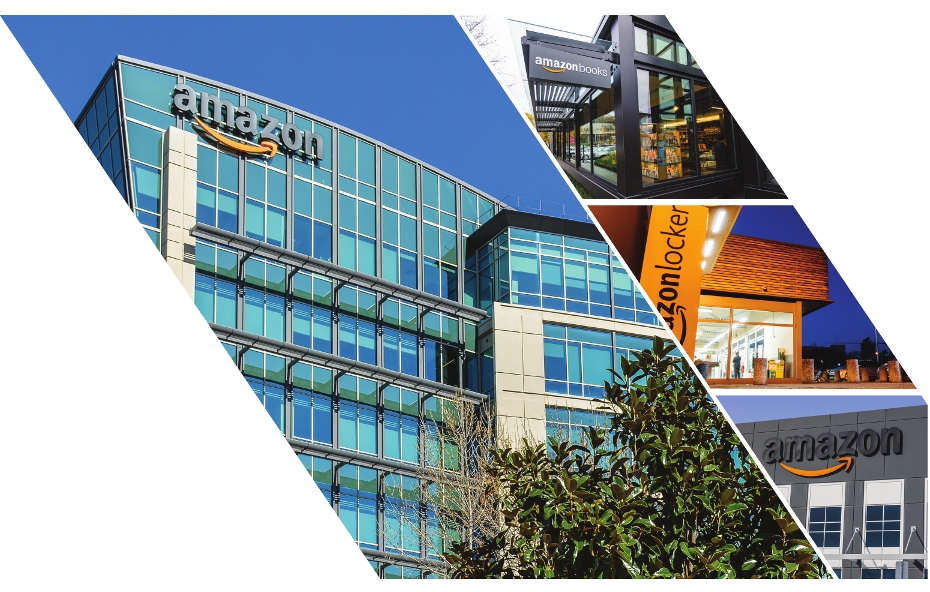

 Photo Gallery1 week ago
Photo Gallery1 week ago
 Headlines4 days ago
Headlines4 days ago
 Headlines1 week ago
Headlines1 week ago
 Headlines2 weeks ago
Headlines2 weeks ago
 Headlines1 week ago
Headlines1 week ago
 Designer Dozen1 week ago
Designer Dozen1 week ago
 Headlines1 week ago
Headlines1 week ago
 Headlines1 week ago
Headlines1 week ago
